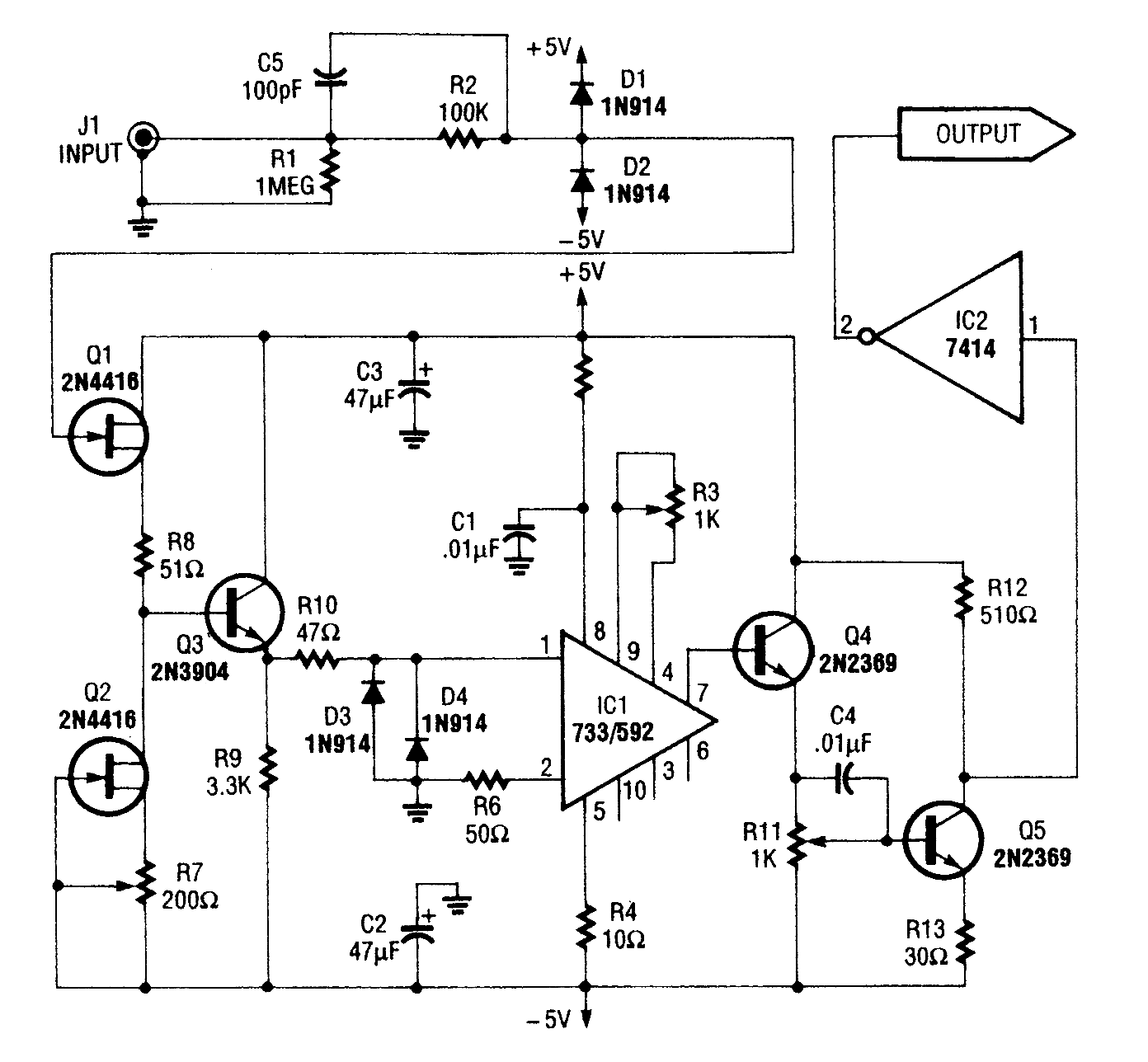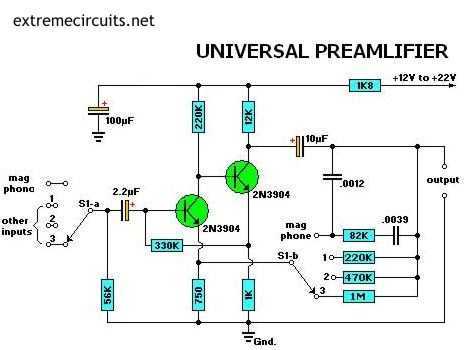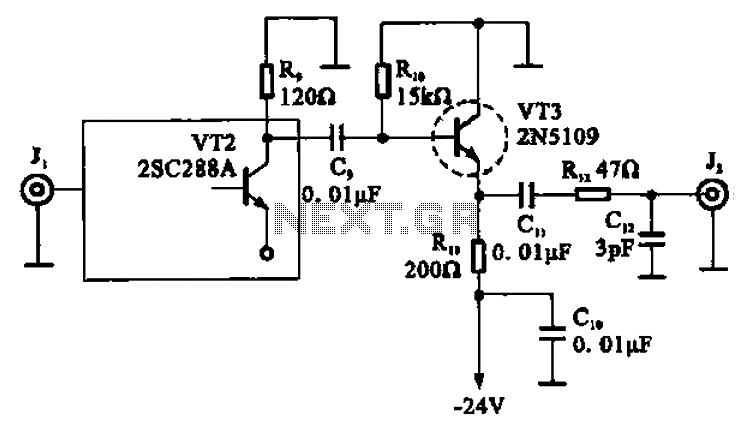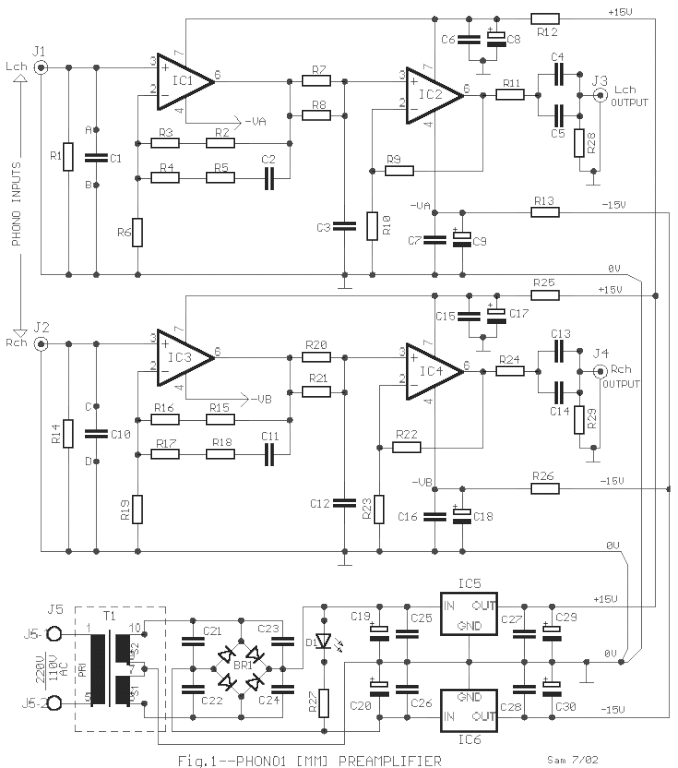
FREQUENCY COUNTER PREAMP

The preamplifier is based on the LM733 or NE592, featuring a bandwidth of 100 MHz. The FET inputs offer an input impedance of approximately 1 MΩ. Signal conditioning is achieved through the use of Q4, Q5, and IC2.
The described preamplifier circuit utilizes the LM733 or NE592 operational amplifiers, which are known for their high-speed performance and low noise characteristics. The bandwidth of 100 MHz indicates that the circuit is capable of amplifying signals with frequencies up to this limit, making it suitable for applications in high-frequency signal processing.
The FET (Field Effect Transistor) inputs are a critical component of this preamp, providing a very high input impedance of around 1 MΩ. This high input impedance is essential for minimizing loading effects on the signal source, ensuring that the original signal is preserved without significant attenuation or distortion.
Signal conditioning is performed by transistors Q4 and Q5, along with IC2. These components work together to enhance the signal's quality by reducing noise and improving linearity. Q4 and Q5 may be configured as part of a differential amplifier stage, allowing for common-mode rejection and further enhancing the circuit's ability to process weak signals in the presence of noise.
The overall design of the preamplifier is aimed at maintaining signal integrity while providing the necessary gain and bandwidth for applications in audio processing, RF communications, or other high-frequency electronic systems. The careful selection of components and their configuration plays a crucial role in achieving the desired performance metrics of the preamp.Based on the LM733 or NE592, the preamp shown has a bandwidth of 100 MHz. The FET inputs provide about 1-M © input impedance. Q4, Q5, and IC2 provide signal conditioning. 🔗 External reference
The described preamplifier circuit utilizes the LM733 or NE592 operational amplifiers, which are known for their high-speed performance and low noise characteristics. The bandwidth of 100 MHz indicates that the circuit is capable of amplifying signals with frequencies up to this limit, making it suitable for applications in high-frequency signal processing.
The FET (Field Effect Transistor) inputs are a critical component of this preamp, providing a very high input impedance of around 1 MΩ. This high input impedance is essential for minimizing loading effects on the signal source, ensuring that the original signal is preserved without significant attenuation or distortion.
Signal conditioning is performed by transistors Q4 and Q5, along with IC2. These components work together to enhance the signal's quality by reducing noise and improving linearity. Q4 and Q5 may be configured as part of a differential amplifier stage, allowing for common-mode rejection and further enhancing the circuit's ability to process weak signals in the presence of noise.
The overall design of the preamplifier is aimed at maintaining signal integrity while providing the necessary gain and bandwidth for applications in audio processing, RF communications, or other high-frequency electronic systems. The careful selection of components and their configuration plays a crucial role in achieving the desired performance metrics of the preamp.Based on the LM733 or NE592, the preamp shown has a bandwidth of 100 MHz. The FET inputs provide about 1-M © input impedance. Q4, Q5, and IC2 provide signal conditioning. 🔗 External reference





